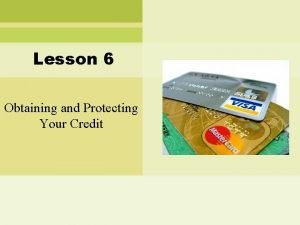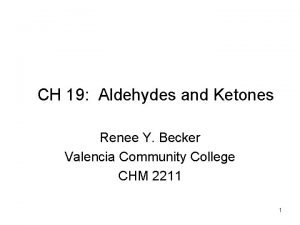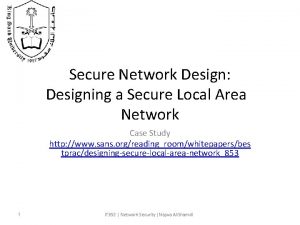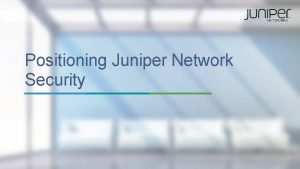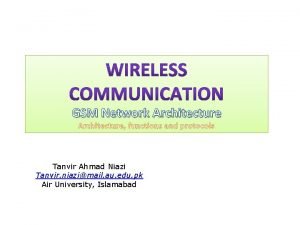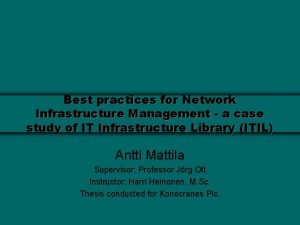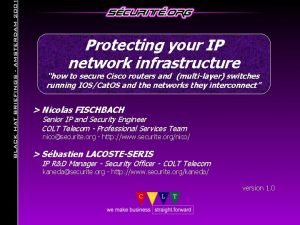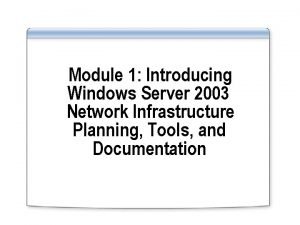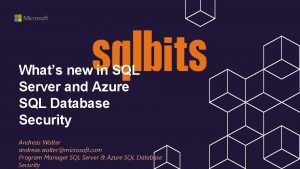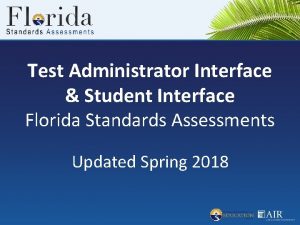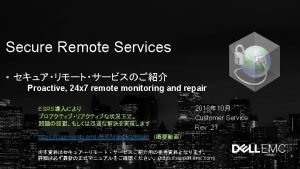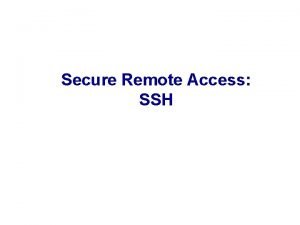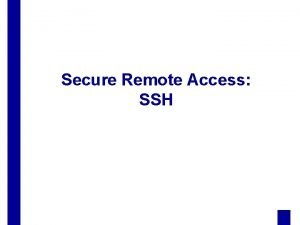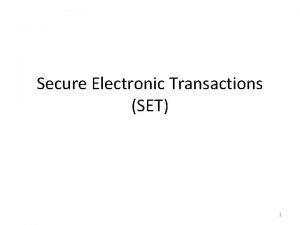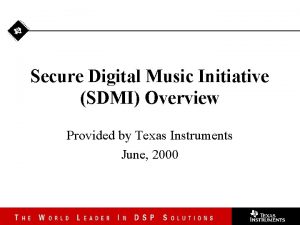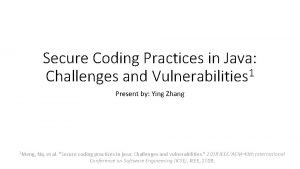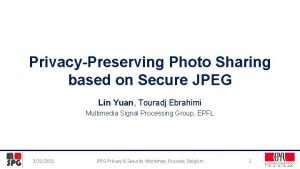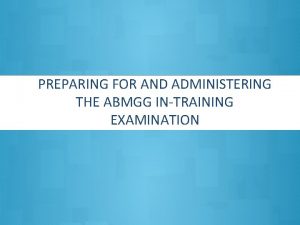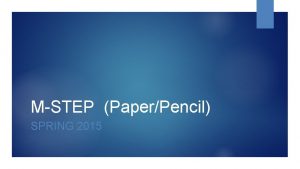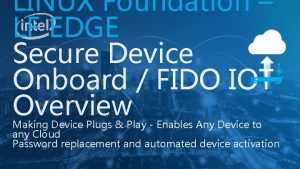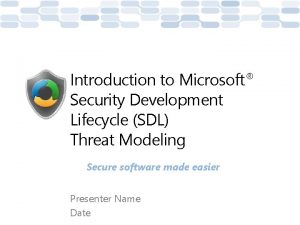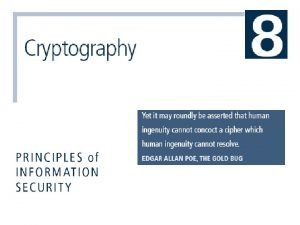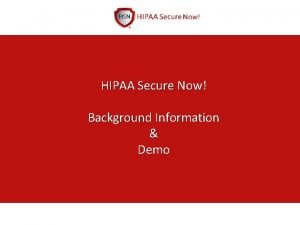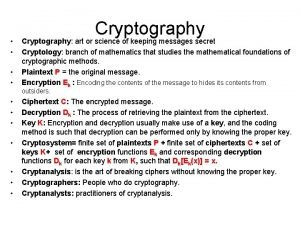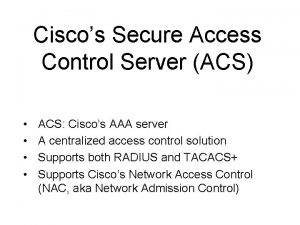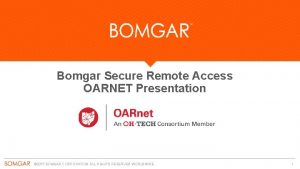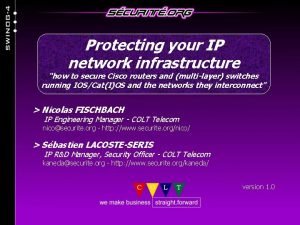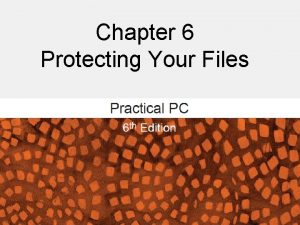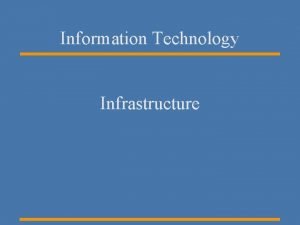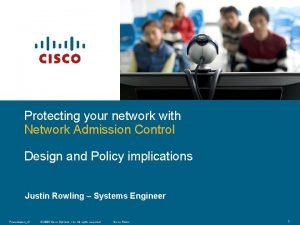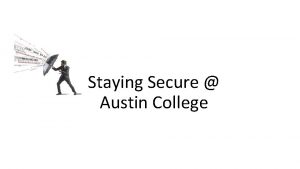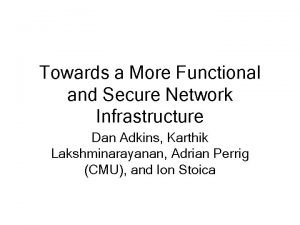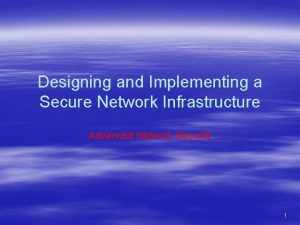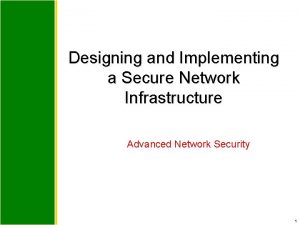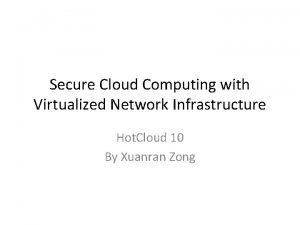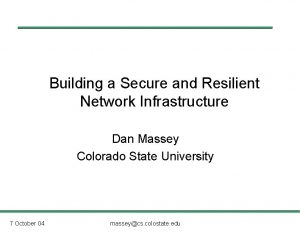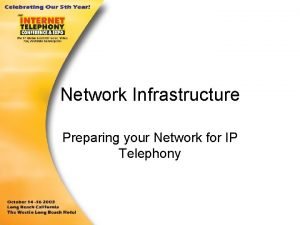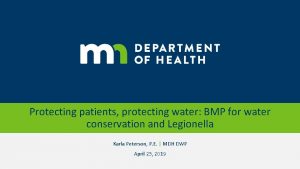Protecting your IP network infrastructure how to secure





































































- Slides: 69

Protecting your IP network infrastructure “how to secure Cisco routers and (multi-layer) switches running IOS/Cat. OS and the networks they interconnect” > Nicolas FISCHBACH Senior IP and Security Engineer COLT Telecom - Professional Services Team nico@securite. org - http: //www. securite. org/nico/ > Sébastien LACOSTE-SERIS IP R&D Manager - Security Officer - COLT Telecom kaneda@securite. org - http: //www. securite. org/kaneda/ version 1. 0

Agenda Network Security > Layer 2, layer 3 and routing protocols attacks > DDo. S/worm attacks detection, protection and filtering > Network traffic analysis Router Security > SNMP and remote administration > AAA and ACLs > Integrity checking MPLS/IPv 6 Disclaimer : we don’t work for Cisco and we don’t have Cisco stock : -) © 2001 Sécurité. Org

Layer 2 protocols and traffic > ARP - Address Resolution Protocol > CDP - Cisco Discovery Protocol > VLAN - Virtual LAN > STP - Spanning Tree > {D/V}TP - Dynamic, VLAN Trunking Protocol > Unicast, Broadcast and Multicast addressing and traffic © 2001 Sécurité. Org

Protocol attacks Well known (not to say old) attacks > ARP cache poisoning and ARP/DHCP spoofing > Tools : dsniff suite, hunt, etc. New (not so old) attacks > HSRP/VRRP spoofing > STP/VTP attacks > VLAN jumping Future (to come) attacks ? > Advanced routing protocols attacks > Rootkits and Loadable Kernel Modules © 2001 Sécurité. Org

MAC address and STP filtering Filter MAC addresses (and add static IP-to-MAC) set port security <mod/port> enable 01 -02 -03 -04 -05 -06 shutdown Activate BPDU (Bridge PDU) to filter STP ! MLS in hybrid mode set spantree disable set spantree portfast bpdu-guard-enable ! MLS in native mode spanning-tree portfast bpduguard Limit broadcast traffic set port broadcast <mod/port> 0. 01% © 2001 Sécurité. Org

VLANs : Layer 2 partitioning (1) The problem with VLANs > VLANs have never been designed for security but are used to enforce it > (Multi-layer) switches become single point of security failure > Do not use the Native VLAN 1 Do not use VMPS > VLAN Management Policy Server allows dynamic VLAN membership based on the MAC address © 2001 Sécurité. Org

VLANs : Layer 2 partitioning (2) VLAN jumping > Is possible : if you use DTP, if a port is in the same VLAN as the trunk’s port Native VLAN (inject 802. 1 q frames) set vlan 2 <mod/port> clear trunk <mod/port> 1 > What exactly is VLAN-bridge ? Private VLAN (6 k, 4 k) and Egde ports (29 xx, 35 xx) > Port isolation, not based on IP/MAC/VLAN > Devices in the same VLAN can’t talk directly to each other © 2001 Sécurité. Org

Protocols : VTP VLAN Trunking Protocol > Enables central VLAN configuration > Message format : like CDP (SNAP HDLC 0 x 2003) > Works only over trunk ports Security measures > Put your switches in transparent VTP mode and use a password set vtp domain <vtp. domain> password <password> set vtp mode transparent © 2001 Sécurité. Org

Protocols : DTP Dynamic Trunking Protocol > Enables automatic port/trunk configuration > Message format : like CDP (SNAP HDLC 0 x 2004) > All switch ports are in auto mode by default Security measures > Turn DTP off on all the ports set trunk off all © 2001 Sécurité. Org

Protocols : CDP (1) CDP (Cisco Discovery Protocol) > Cisco proprietary > Works on any HDLC capable link/device > Multicast traffic > Information leaked to other peers : device id/name, network address, port id, capabilities, software version, platform and IP network prefix Message format © 2001 Sécurité. Org

Protocols : CDP (2) Open to Do. S attacks > Discovered by FX (see the Cisco Security Notice) Security measures (router) > Global deactivation no cdp run > Per interface deactivation interface xy no cdp enable Security measures (switch) > Global/per interface deactivation set cdp disable <mod/port> © 2001 Sécurité. Org

Layer 3 protocols The network layer > IP : no built-in security > ICMP : information leakage and side effects > HSRP / VRRP : provide next-hop redundancy > RIP / RIPv 2 : no authentication (v 1) and flooding > OSPF : multicast (adjacencies and DR/BDR at risk) > BGP : core of the Internet (RR/peerings at risk) Not well known or not so used in enterprise networks > IS-IS > (E)IGRP © 2001 Sécurité. Org

Protocols : BGP (1) BGP (Border Gateway Protocol) > Version 4 > Runs on port 179/tcp > Authentication : MD 5 (not often used) > Point-to-point over directly connected interfaces or multi-hop between non adjacent routers > BGP route injection tools exist (in private circles) BGP (UPDATE) message format © 2001 Sécurité. Org

Protocols : BGP (2) Where are the risks ? > Internet Exchanges : all providers are usually connected to the same shared infrastructure (a switch for example) : do prefix/AS_path filtering > Your direct {up, down}stream : IP filter on interfaces > Multi-hop configurations (Man-in-the-middle attack) What to monitor > AS_path you receive from upstreams > AS_path that other ISPs are getting that contains your ASN (route servers) > Are the paths changing (especially the best path) ? > ARP changes (IX public switches) © 2001 Sécurité. Org

Protocols : BGP (3) Additional security measures > Do not use the same password with all the peers > Log changes and use IPSec router bgp 65000 bgp log-neighbor-changes network x. x neighbor y. y remote-as 65001 neighbor y. y password <MD 5 password> neighbor y. y version 4 neighbor y. y prefix-list theirnetworks in neighbor y. y prefix-list ournetworks out neighbor y. y maximum-prefix 120000 neighbor y. y route-map our. ASpath out ip prefix-list ournetworks seq 5 permit z. z/17 ip prefix-list ournetworks seq 10 deny 0. 0/0 le 32 ip prefix-list theirnetworks seq 5 permit k. k/19 ip as-path access-list permit ^<AS>( <AS>)*$ route-map our. ASpath permit 10 match as-path 99 © 2001 Sécurité. Org

Protocols : BGP (4) BGP route injection tool : what is the challenge ? > Find the e. BGP peer - MITM - SNMP - route-servers and looking glasses - directly adjacent IPs, . 1, . 254, etc > Inject the update - MITM (or ARP spoofing on IX switches) - synchronize with/hijack the TCP session © 2001 Sécurité. Org

Sequence number prediction ISN problems on Cisco routers Vulnerable IOS “Less” vulnerable IOS > “Fixed” as of 12. 0(15) and 12. 1(7) > ISNs are (still) time dependant Source : http: //razor. bindview. com/publish/papers/tcpseq. html © 2001 Sécurité. Org

Protocols : OSPF (1) OSPF (Open Shortest Path First) > Protocol type 89 > Multicast IP : “easy” to inject LSAs Security measures > Authenticate OSPF exchanges interface xy !ip ospf authentication-key <key> ip ospf message-digest-key 1 md 5 <key> router ospf 1 area 0 authentication [message-digest] > Turn your network into a NBMA network interface xy ip ospf network non-broadcast router ospf 1 neighbor x. x © 2001 Sécurité. Org

Protocols : OSPF (2) Security measures > Don’t put the interfaces that shouldn’t send or receive OSPF LSAs in your network statement or then exclude them with a passive-interface statement > Log changes router ospf 1 log-adjacency-changes network x. x passive-interface default no passive-interface xy > You can’t filter what is injected into the local area (the network statement meaning is misleading) only to other ASes > You can filter what you receive router ospf 1 distribute-list <ACL> in distribute-list <ACL> out © 2001 Sécurité. Org

Protocols : HSRP/VRRP (1) HSRP (Hot Standby Routing Protocol) > Provides next-hop redundancy (RFC 2281) > Information disclosure : virtual MAC address > 00 -00 -0 c-07 -ac-<group> > HSRP virtual interface doesn’t send ICMP redirects > You can have more than 2 routers in a standby group, no need to kill a router, becoming the master is enough VRRP (Virtual Router Redundancy Protocol - RFC 2338) > Supports MD 5 for authentication (IP Authentication Header) © 2001 Sécurité. Org

Protocols : HSRP/VRRP (2) Security measures > Use password authentication interface xy standby 10 priority 200 preempt standby 10 authentication p 4 ssw 0 rd standby 10 ip x. x > Change the virtual MAC address interface xy standby 10 mac-address <mac-address> > use IPSec (Cisco recommendation) © 2001 Sécurité. Org

DDo. S detection (1) Netflow > Accounting data (AS, IP flows, protocols, etc) > Send in clear text over the network (UDP) to a gatherer > With CEF activated Netflow will only do accounting > Without CEF the router will do netflow switching > Only counts outgoing traffic on the interface > How to export the data ip flow-export version 5 origin-as ip flow-export destination x. x interface xy ip route-cache flow > How to view the data : sh ip cache flow © 2001 Sécurité. Org

DDo. S detection (2) (Un)usual traffic distribution per protocol > TCP : ~90 % (HTTP, FTP and P 2 P tools) > UDP : ~10 % (DNS, SNMP, streaming) > ICMP : <1 % > IGMP : <1 % > Mostly 64 bytes packets > RRDtool and Netflow can be used to graph trends, detect changes and anomalies Source : Flowscan from UW-Madison (http: //wwwstats. net. wisc. edu/) © 2001 Sécurité. Org

DDo. S detection (3) Netflow data on Multi-Layer Switches > Netflow-based MLS flow-mode is “destination-only” (no source address is cached) > Enable “full-flow” mode (performance impact on SE 1) ! MLS in hybrid mode set mls flow full ! MLS in native mode mls flow ip full > Display the entries ! MLS in hybrid mode set mls ent ! MLS in native mode show mls ip Poor man’s netflow : ntop ? © 2001 Sécurité. Org

DDo. S prevention (1) Unicast RPF (Reverse-Path Forwarding) > Needs CEF (Cisco Express Forwarding) or d. CEF > Requires IOS 12. x and uses ~30 MB of memory > Strict : IP packets are checked to ensure that the route back to the source uses the same interface > Only the best path (if no multi-path or equal cost paths) is in the FIB > Asymmetric routes are supported (really : ) > Check the BGP weight if you use strict mode in a multihomed configuration © 2001 Sécurité. Org

DDo. S prevention (2) Unicast RPF (Reverse-Path Forwarding) > Strict (you can use an ACL for exceptions or for logs) ip cef [distributed] interface xy ip verify unicast reverse-path [allow-self-ping] [ acl] > “Loose check” (allowed if the prefix exists in the FIB) ip verify unicast source reachable-via any © 2001 Sécurité. Org

DDo. S prevention (3) ICMP, UDP, TCP SYN rate-limiting interface xy rate-limit input access-group 100 8000 conform-action transmit exceed-action drop rate-limit output access-group 100 8000 conform-action transmit exceed-action drop <…> access-list 100 deny tcp any host x. x established access-list 100 permit tcp any host x. x access-list 101 permit icmp any any echo-reply > UDP rate-limiting can be a problem if your customer is a streaming company © 2001 Sécurité. Org

DDo. S prevention (4) TCP Intercept > Can do as much good as bad > If enabled : process switching and not “full” CEF anymore > The “destination” host must send a RST (no silent drops) or you’ll Do. S yourself > Same is true if you use “blackholed” routes (route to Null 0) ip tcp intercept list 100 ip tcp intercept connection-timeout 60 ip tcp intercept watch-timeout 10 ip tcp intercept one-minute low 1500 ip tcp intercept one-minute high 6000 access-list 100 permit tcp any x. x. x. 0 0. 0. 0. 255 © 2001 Sécurité. Org

DDo. S prevention (5) Advanced ICMP filtering > Only let the “mission critical” ICMP messages in interface xy ip access-group 100 in access-list 100 deny icmp any fragments access-list 100 permit icmp any any echo-reply access-list 100 permit icmp any packet-too-big access-list 100 permit icmp any source-quench access-list 100 permit icmp any time-exceeded access-list 100 deny icmp any access-list 100 permit ip any > ICMP filtering is a source of dispute. YMMV. © 2001 Sécurité. Org

DDo. S prevention (6) Advanced technique 1 : BGP/Null 0 > Pick an IP address from TEST-NET and add a static route to Null 0 for it (on all your routers) > Have a “master” BGP router set the next-hop for the source network you want to “drop” to the selected IP > Have BGP redistribute it to the routers in your AS only and u. RPF will drop it (at the LC level, not on the RP) router bgp <AS> network <source. Of. DDOS> mask <netmask> route-map ddos-nh set ip next-hop <TEST-NETIPaddr> ip route <TEST-NET> 255. 0 Null 0 > Do not redistribute it to your peers : use a private AS or a “no-export” community © 2001 Sécurité. Org

DDo. S prevention (7) Advanced technique 2 : BGP/CAR/FIB > Set a special community for the network you want to rate-limit on your “master” BGP router and send this community to your i. BGP peers router bgp <AS> network <dest. Of. DDOS> mask <netmask> neighbor x. x route-map ddos-rl out neighbor x. x send community access-list 10 permit <dest. Of. DDOS> route-map ddos-rl match ip address 10 set community <AS>: 66 no-export ip route <dest. Of. DDOS> 255. 0 Null 0 © 2001 Sécurité. Org

DDo. S prevention (8) Advanced technique 2 : BGP/CAR/FIB > On the routers change the Qo. SID entry in the FIB based on this special community > Use the Qo. SID entry of the FIB to rate-limit router bgp <AS> table-map ddos-rl ip community list 1 permit <AS>: 66 route-map ddos-rl match community 1 set ip qos-group 66 interface xy bgp-policy source ip-qos-map rate-limit input qos-group 66. . . © 2001 Sécurité. Org

Ingress/egress filtering (1) What you should never route/see/allow through > RFC 1918 (10. 0/8, 172. 16. 0. 0/12, 192. 168. 0. 0/16) > 0. 0/x, 127. 0. 0. 0/8 > 169. 254. 0. 0/16 (auto-configuration when no DHCP) > 192. 0/24 (Netname: TEST-NET, like example. com) > Multicast blocks (D Class) and Martian networks (E+) > “Hijacked” space by some vendors (192. 0. 0. 192 for some printers) > (ARIN) Reserved blocks (bogon networks) > Packets to broadcast addresses or where source == destination What you should route/let through > Your network prefixes (anti-spoofing) © 2001 Sécurité. Org

Ingress/egress filtering (2) Example with ACLs > Filter on network border : CPE/IX/uplinks interface xy access-group in 100 access-group out 100 access-list 100 deny ip host 0. 0 any access-list 100 deny ip 127. 0. 0. 0 0. 255 access-list 100 deny ip 10. 0 0. 255. 0. 0. 0 0. 255 access-list 100 deny ip 172. 16. 0. 0 0. 15. 255 255. 240. 0. 0 0. 15. 255 access-list 100 deny ip 192. 168. 0. 0. 255 255. 0. 0. 255 access-list 100 deny ip 192. 0 0. 0. 0. 255 access-list 100 deny ip 169. 254. 0. 0. 255 255. 0. 0. 255 access-list 100 deny ip 240. 0 15. 255 any access-list 100 permit ip any ! Or permit ip <your network prefixes only> Example with route to Null 0 ip route 10. 0 255. 0. 0. 0 null 0 ip route 172. 16. 0. 0 255. 240. 0. 0 null 0 ip route 192. 168. 0. 0 255. 0. 0 null 0 © 2001 Sécurité. Org

Worm detection and protection (1) How to detect a new worm > New/unusual number of HTTP/SMTP flows and server logs How to protect with NBAR (Network-Based Application Recognition) > Needs CEF > Available as of 12. 1(5)T > Like TCP Intercept - do we need it ? > Side-effect : the TCP handshake is already done but the server never receives the HTTP GET request > Performance impact : ~20% CPU © 2001 Sécurité. Org

Worm detection and protection (2) Inbound classification with NBAR and outbound filtering with ACLs ! Class-based inbound marking class-map match-any http-hacks match protocol http url “*cmd. exe*” ! Policy map to mark inbound policy-map mark-inbound-http-hacks class http-hacks set ip dscp 1 ! Apply the service policy to the « attacking » interface int xy service-policy input mark-inbound-http-hacks ! Block with an ACL access-list 100 deny ip any dscp 1 log access-list 100 permit ip any ! Apply the ACL to the « protected » interface int xy ip access-group 100 out © 2001 Sécurité. Org

Worm detection and protection (3) Inbound classification with NBAR and class-based policing ! Class-based inbound marking class-map match-any http-hacks match protocol http url “*cmd. exe*” ! Policy map to mark inbound policy-map drop-inbound-http-hacks class http-hacks policy 8000 4000 2000 conform-action drop exceed-action drop violate-action drop ! Apply the service policy to the « attacking » interface int xy service-policy input police-inbound-http-hacks © 2001 Sécurité. Org

Worm detection and protection (4) Inbound classification with NBAR and policy based routing ! Class-based inbound marking class-map match-any http-hacks match protocol http url “*cmd. exe*” ! Policy map to mark inbound policy-map mark-inbound-http-hacks class http-hacks set ip dscp 1 ! Apply the service policy to the « attacking » interface int xy service-policy input mark-inbound-http-hacks ! Create a route-map access-list 100 permit ip any dscp 1 route-map route 2 null 10 match ip address 100 set interface Null 0 ! Apply the routing policy to the « attacking » interface int xy ip policy route-map route 2 null © 2001 Sécurité. Org

Worm detection and protection (5) NBAR Restrictions and limitations > Supports up to 24 concurrent URLs, hosts or MIME types matches > Can’t match beyond the first 400 bytes in a URL > Can’t deal with fragmented packets > HTTPS traffic (that’s normal ; -) > Packets originating from/sent to the router (you can’t protect the local HTTP server) > Doesn’t support Unicode (UTF-8/%u) Tune the scheduler and the timeout ip nbar resources 600 1000 50 scheduler allocate 30000 2000 © 2001 Sécurité. Org

DDo. S/worm research/future Worse to come > A lot of research has been done but nothing has been published/disclosed : “risks are too high” > Most of the worms we’ve seen were quite gentle > Will the next worm affect IIS/Outlook users again ? > What are the effects on the Internet stability ? © 2001 Sécurité. Org

{tcpdump, snoop}ing on routers What can be done with local output > Debug with ACLs access-list 100 … debug ip packet detail 100 > Always use the buffer and don’t debug to the console logging buffered 64000 debugging > Performance impact : check the router’s load with sh proc cpu What can be send to a remote device > Use a GRE tunnel to a remote host and inject the traffic back from there (tunnelx) © 2001 Sécurité. Org

{tcpdump, snoop}ing on switches What can be done with local output > Nothing What can be send to a remote device > Mirror ports or a VLAN to another port set span <source (mod/port or VLAN)> <destination port> > Can copy only designated traffic to be inspected (VACL w/ “capture” keyword) : set security acl capture-ports <mod/port> > RSPAN dumps the traffic to a VLAN (needs end-to-end Cat 6 K) > 1 or 2 SPAN port(s) depending on the switch > Performance impact quite low : check the CPU load with ps -c (hidden command) © 2001 Sécurité. Org

Configuration basics (1) Turn off all the unneeded services no ip bootp server no tcp-small-servers no udp-small-servers Use syslog no ip identd no ip finger service nagle no cdp run no boot network no service config no ip subnet-zero no service finger no service pad no ip http server no ip source-route service time log datetime localtime show-timezone msec service time debug datetime localtime show-timezone msec logging x. x logging trap debugging logging source loopback 0 logging buffered 64000 debugging Use (authenticated) NTP ntp authentication-key 10 md 5 <key> ntp authenticate ntp trusted-key 10 ntp server x. x [key 10] ntp access-group peer 20 access-list 20 permit host x. x access-list 20 deny any © 2001 Sécurité. Org

Configuration basics (2) At the interface level interface xy no ip source-route no ip directed-broadcast no ip proxy-arp no ip redirects no ip unreachables ! IP accounting for the traffic that fails the IP ACLs ip accounting access-violations no ip mask-reply no cdp enable > If multicast is used interface xy ! To prevent Auto-RP messages from entering the PIM domain ip multicast boundary 10 access-list 10 deny 224. 0. 1. 39 access-list 10 deny 224. 0. 1. 40 Use loopbacks whenever possible interface loopback 0 ip address x. x 255 © 2001 Sécurité. Org

Admin : SNMP (1) Simple Network Management Protocol > v 1 : RFC 1157 uses community strings for authentication > v 2 : RFC 1441/1446 adds security (party) and get-bulk > v 3 : RFC 2274 adds integrity checking, encryption and user authentication Known attacks/problems > Netadmins use RW communities for management > Weak communities > Replay and Do. S attacks > Information leak > Auto-discovery feature of management tools that “send” your community out of your network range (to external parties) © 2001 Sécurité. Org

Admin : SNMP (2) IP level filtering > Define an ACL and activate it on a per interface basis interface Ethernet 0/0 access-group in 100 access-list 100 permit udp host 192. 168. 1. 1 host 192. 168. 1. 2 eq snmp access-list 100 permit udp host 192. 168. 1. 2 eq snmp host 192. 168. 1. 1 access-list 100 deny udp any eq snmp log-input Application level filtering > Define an ACL and use it for application access control > Use views to restrict the exposure snmp-server community r 3 ad view cutdown RO 10 snmp-server community wr 1 te RW 10 snmp-server view cutdown ip. 21 excluded snmp-server enable traps <…> snmp-server host x. x snmp-server source loopback 0 access-list 10 permit x. x © 2001 Sécurité. Org

Admin : SNMP (3) SNMP v 3 > Define a user/group and what the group can do snmp-server group engineering v 3 priv read cutdown 10 snmp-server user nico engineering v 3 auth md 5 myp 4 ss priv des 56 mydes 56 snmp-server view cutdown ip. 21 excluded access-list 10 permit x. x access-list 10 deny any log Two security advisories > The “hidden” ILMI community (show snmp community shows all communities) > Read-write community available with a read only access © 2001 Sécurité. Org

Admin : Secure Shell (1) SSHv 1 (client and server) support > Routers : as of 12. 1(1)T/12. 0(10)S (go for an image with 3 DES), scp as of 12. 2 T > Switches : Cat. OS 6. x What are the risks/limitations ? > Cisco’s implementation is based on SSH v 1 and suffered from the same bugs : key recovery, CRC 32, traffic analysis (SSHow), timing analysis and attacks > You can’t force 3 DES only nor use keys > Fixed in 12. 0(20)S, 12. 1(8 a)E, 12. 2(3), . . . © 2001 Sécurité. Org

Admin : Secure Shell (2) SSH configuration hostname <hostname> ip domain-name <domainname> crypto key generate rsa ip ssh timeout 60 ip ssh authentication-retries 3 scp configuration ip scp server enable © 2001 Sécurité. Org

Admin : IPSec (1) IPSec configuration > Deny all traffic except IPSec related interface xy ip address y. y 255. 0 ip access-group 100 in access-list 100 permit udp host x. x host y. y eq 500 access-list 100 permit esp host x. x host y. y access-list 100 permit ahp host x. x host y. y > Define a SA (Security Association) : traffic to encrypt access-list 110 permit ip x. x <wildcard> y. y <wildcard> > Define an IKE policy crypto isakmp policy 1 hash md 5 encryption 3 des authentication pre-share ! DH group (1024 bits) group 2 crypto isakmp key <key> address y. y © 2001 Sécurité. Org

Admin : IPSec (2) IPSec configuration > Define the transform-sets (tunnel mode is better, use transport with Win 2 K -- easier) crypto ipsec transform-set 3 desmd 5 esp-3 des esp-md 5 -hmac > Put all together in a crypto-map crypto map mycryptomap 10 ipsec-isakmp set peer y. y set transform-set 3 desmd 5 match address 110 > And affect it to an interface xy crypto-map mycryptomap © 2001 Sécurité. Org

Admin : local users/passwords (1) Local users > Encryption type 7 is reversible, MD 5 as of 12. 1(8 a)E Enable secret > Use MD 5 (type 5) service password-encryption enable secret 5 <…> Access method > Remove telnet and enable SSH service tcp-keepalives-in line vty 0 4 exec-timeout 0 60 access-class 10 in transport input ssh transport output none transport preferred none access-list 10 permit x. x > Don’t forget the console and AUX port © 2001 Sécurité. Org

Admin : local users/passwords (2) Switches set password <password> set enablepass <password> ! For access via sc 0 set ip permit enable set ip permit x. x y. y telnet set ip permit x. x y. y ssh set ip permit z. z y. y snmp © 2001 Sécurité. Org

AAA: Authentication / Accounting Authentication/accounting : RADIUS/TACACS+ aaa new-model aaa authentication login default tacacs+ enable aaa authentication enable default tacacs+ enable aaa accounting exec default start-stop group tacacs+ ip tacacs source-interface loopback 0 tacacs-server host x. x tacacs-server key K 3 y Command accounting (TACACS+ only) aaa accounting commands 15 default start-stop group tacacs+ © 2001 Sécurité. Org

AAA: Authorization Privilege levels > 1 : user EXEC “view only” > 15 : privileged EXEC “enable” > Change the privilege level (reduces information disclosure and avoids a stepping stone) > A user can only see parts of the configuration he is allowed to change or gets a view-and-disconnect privilege exec level 15 telnet privilege exec level 15 ssh privilege exec level 15 rlogin privilege exec level 15 show logging privilege exec level 15 show [ ip] access-lists username seeandgo privilege autocommand show running Command authorization > Only supported with TACACS+ © 2001 Sécurité. Org

AAA: Kerberos (1) Cisco Routers > Kerberized Telnet and password authentication using Kerberos (telnet, SSH and console) > Can map instance to Cisco privilege (locally defined) > Feature name : Kerberos V client support (Enterprise) > Not supported on all hardware (16 xx, GSR, etc) Cisco Switches > Telnet only (SSH available as of 6. 1 but w/o Kerberos support) > At least SE Software Release 5. x > Only supported on Catalyst 4 K, 5 K and 6 K/6500 (with SE I, not SE II) © 2001 Sécurité. Org

AAA: Kerberos (2) Kerberos on a router aaa authentication login default krb 5 -telnet local aaa authorization exec default krb 5 -instance kerberos local-realm COLT. CH kerberos srvtab entry host/. . . kerberos server COLT. CH 192. 168. 0. 14 kerberos instance map engineering 15 kerberos instance map support 3 kerberos credentials forward line vty 0 4 ntp server 192. 168. 0. 126 Kerberos on a switch set kerberos local-realm COLT. CH set kerberos clients mandatory set kerberos credentials forward set kerberos server COLT. CH 192. 168. 0. 82 88 set kerberos srvtab entry host/. . . set authentication login kerberos enable telnet primary set authentication enable kerberos enable telnet primary set ntp client enable set ntp server 192. 168. 0. 11 © 2001 Sécurité. Org

ACLs (1) IP filtering with ACLs > Is not stateful and doesn’t do any reassembly > log-input also logs the source interface and the source MAC address > Only the first fragment is filtered (unless you use the fragment keyword) Well known ACL types > Standard : source IP address only (1 -99, 1300 -1999) > Extended : limited to IP addresses, protocols, ports, ACK/RST (established) bit is set, etc. (100 -199, 2000 -2699, “named” ACLs) © 2001 Sécurité. Org

ACLs (2) Other “kinds” of ACLs > Turbo. ACL : uses a hash table, benefits when 5+ ACEs > Reflexive : enables on-demand dynamic and temporary reply filters (doesn’t work for H. 323 like protocols) > Dynamic : adds user authentication to Extended ACLs > Named : allows you to delete individual ACEs > Time-based : adds a time-range option > Context-Based Access-Control : “inspects” the protocol (helper/proxy/fixup-like), used in conjunction with ACLs > MAC : filters on MAC address (700 -799 for standard, 1100 -1199 for extended) > Protocol : filters on protocol type (200 -299) © 2001 Sécurité. Org

ACLs (3) Example : Extended ACL on a router no access-list 100 permit <…> access-list 100 deny tcp any range 1 65535 any range 0 65535 log access-list 100 deny udp any range 1 65535 any range 0 65535 log access-list 100 deny ip any log-input ACLs on a Multi-Layer Switch > ACLs defined on Layer 3 (S/E/R/D) are pushed to the NMP (TCAM) > Traffic will not hit the MSCF if you don’t use log[-input], ip unreachables, TCP Intercept > VACLs (VLAN) : Can filter IP level traffic and are pushed from the PFC to the switch © 2001 Sécurité. Org

Switches High-end switches (6509) > Native (IOS only) > Hybrid (IOS and Cat. OS) > Wire-speed with IP ACLs Cat. OS 6. 2 integrates IOS Firewall feature set > Authentication proxies, CBAC, TCP Intercept, RACLs > No IDS and no encryption support > Roadmap: MAC-layer VACLs (for IP traffic) Cat. IOS 12. 1. x supports > IP Unicast-RPF, TCP Intercept, etc © 2001 Sécurité. Org

Router integrity checking (1) Four steps to build a tripwire-like for IOS/Cat. OS >1. Store your routers and switches configurations in a central (trusted) repository (CVS for example) >2. Get the configuration from the device (scripted telnet in Perl or expect, rsh, tftp, scp) or have the device send you the configuration (needs a RW SNMP access) snmpset -c <community> <router. IP> . 1. 3. 6. 1. 4. 1. 9. 2. 1. 55. < tftpserver. IP> s <filename> >3. Check : automatically (cron/at job), when you see “configured by <xyz>” or a router boot in the logfile or when you get the “configuration changed” SNMP trap © 2001 Sécurité. Org

Router integrity checking (2) Four steps to build a tripwire-like for IOS/Cat. OS >4. Diff the configuration with your own script or use CVS Limitations and details > You still have to trust the running IOS/Cat. OS (no Cisco “rootkit” yet) and your network (MITM attacks) > The configuration is transmitted in clear text over the network (unless you use scp or IPSec to encrypt the traffic) > Do not forget that there are two “files”: startup-config and running-config > Do the same for the IOS/Cat. OS images > Cisco MIBs : CISCO-CONFIG* © 2001 Sécurité. Org

Router integrity checking (3) Cisco IOS rootkit/Bo. F/FS : is it possible ? > Proprietary, closed source OS running on MIPS (newer models) or Mot 68 K (older models) > ELF 32 -bit MSB executable, statically linked, stripped > What is possible with remote gdb access : gdb {kernel¦pid pid-num} ? > Is the ROMMON a good starting point (local gdb) ? “Inside Cisco IOS software architecture” - Cisco Press : - “In general, the IOS design emphasizes speed at the expense of extra fault protection” - “To minimize overhead, IOS does not employ virtual memory protection between processes” - “Everything, including the kernel, runs in user mode on the CPU and has full access to system resources” © 2001 Sécurité. Org

Router integrity checking (4) Cisco IOS rootkit/Bo. F/FS : open questions/issues > No (known) local tools/command to interact and “play” with the kernel, memory, processes, etc. > What can be done in enable engineer mode ? > Is it possible to upload a modified IOS image and start it without a reboot (like “Linux two kernel monte”) ? > A lot of different images exist (but providers usually go for ~12. 0(x)S) and a tool to patch images would be required > What will happen with IOS-NG (support for loadable modules) ? © 2001 Sécurité. Org

MPLS (1) Multi. Protocol Label Switching > Virtual Circuits, not encrypted/authenticated VPNs > “Equivalent” to a layer 2 VPN (ATM/FR) > IPSec can be used to secure the traffic > VPN partitioning done at routing layer > One routing table per VPN on each PE router (VRF) > MPLS label added to the IP packet to identify the VPN > Each router (LSR) on the MPLS path (LSP) has a local table (LIB) > The label only has a “local” meaning and is/may be changed on each hop © 2001 Sécurité. Org

MPLS (2) Attacks > Labeled packets injection : - blocked by default on all interfaces (CE/PE) - easy if access to the MPLS routers > Inject data in the signaling protocols ((MP-)BGP and IGPs) to modify the VPN topology Security measures > Good configuration of all routers > Difficult to gather MPLS information from the routers © 2001 Sécurité. Org

IPv 6 > Basically no new risks/big changes > “Native” IPSec support > Higher risks during the transition phase from IPv 4 to IPv 6 ? > MAC address can be part of the IP address © 2001 Sécurité. Org

That’s all folks : -) Latest version of this document < http: //www. securite. org/presentations/secip/ > Q&A Thanks to the members of the e. Xperts Group for the proofreading and feedback. Image: http: //www. inforamp. net/~dredge/funkycomputercrowd. html © 2001 Sécurité. Org
 Obtaining and protecting your credit
Obtaining and protecting your credit Chapter 9 obtaining and protecting your credit
Chapter 9 obtaining and protecting your credit Chapter 9 obtaining and protecting your credit
Chapter 9 obtaining and protecting your credit Chapter 20 civil liberties protecting individual rights
Chapter 20 civil liberties protecting individual rights Aldehyde protecting group
Aldehyde protecting group Ch3li reaction with ketone
Ch3li reaction with ketone Carbamate protecting group
Carbamate protecting group John proctor quotes
John proctor quotes Protecting student data
Protecting student data Protecting consumers savers and investors examples
Protecting consumers savers and investors examples Which of the following is not part of overall biodiversity
Which of the following is not part of overall biodiversity Biodiversity
Biodiversity Chapter 20 civil liberties protecting individual rights
Chapter 20 civil liberties protecting individual rights Chapter 20 civil liberties protecting individual rights
Chapter 20 civil liberties protecting individual rights Designing a secure network
Designing a secure network Juniper
Juniper Juniper advanced threat prevention
Juniper advanced threat prevention Secure network gateway
Secure network gateway Cellular system
Cellular system Advanced network infrastructure
Advanced network infrastructure Infrastructure less network
Infrastructure less network Change management network infrastructure
Change management network infrastructure Ip network infrastructure
Ip network infrastructure Electric commerce
Electric commerce Berkeley open infrastructure for network computing
Berkeley open infrastructure for network computing School planning team organizational structure
School planning team organizational structure Secure your future
Secure your future Give us your hungry your tired your poor
Give us your hungry your tired your poor Virtual circuits and datagram networks
Virtual circuits and datagram networks Network topologies
Network topologies Features of peer to peer network and client server network
Features of peer to peer network and client server network Ece 526
Ece 526 Network centric computing
Network centric computing Packet switched network vs circuit switched network
Packet switched network vs circuit switched network Secure vs insecure attachment ap psychology
Secure vs insecure attachment ap psychology Azure sql server advanced data security
Azure sql server advanced data security Wvgsa practice test
Wvgsa practice test Ta interface indiana
Ta interface indiana Voltage secure email outlook plugin
Voltage secure email outlook plugin Secure underground storage
Secure underground storage Ta interface florida
Ta interface florida Secure logiq video servers
Secure logiq video servers Kov-21 card took over 120 seconds to become ready
Kov-21 card took over 120 seconds to become ready How secure is smtp server
How secure is smtp server Esrs dell
Esrs dell Secure remote login ssh
Secure remote login ssh Secure remote login ssh
Secure remote login ssh Secure gsm
Secure gsm Set secure electronic transaction
Set secure electronic transaction What is sdmi
What is sdmi Secure coding practices in java
Secure coding practices in java Secure access washington (saw)
Secure access washington (saw) Secure online photo sharing
Secure online photo sharing Nbme secure browser
Nbme secure browser Primerica answer financial
Primerica answer financial Nh tide portal
Nh tide portal Sure secure solutions
Sure secure solutions Baa secure site michigan
Baa secure site michigan Secure device onboard
Secure device onboard Microsoft secure development lifecycle
Microsoft secure development lifecycle The process of making and using codes to secure information
The process of making and using codes to secure information Lcps secure wifi password
Lcps secure wifi password Hipaa secure now
Hipaa secure now My firm foundation
My firm foundation Cmrr secure erase
Cmrr secure erase It is the art of keeping messages secure.
It is the art of keeping messages secure. Secure the scene
Secure the scene Cisco secure access control server for windows
Cisco secure access control server for windows Can we make operating systems reliable and secure
Can we make operating systems reliable and secure Bomgar features
Bomgar features
